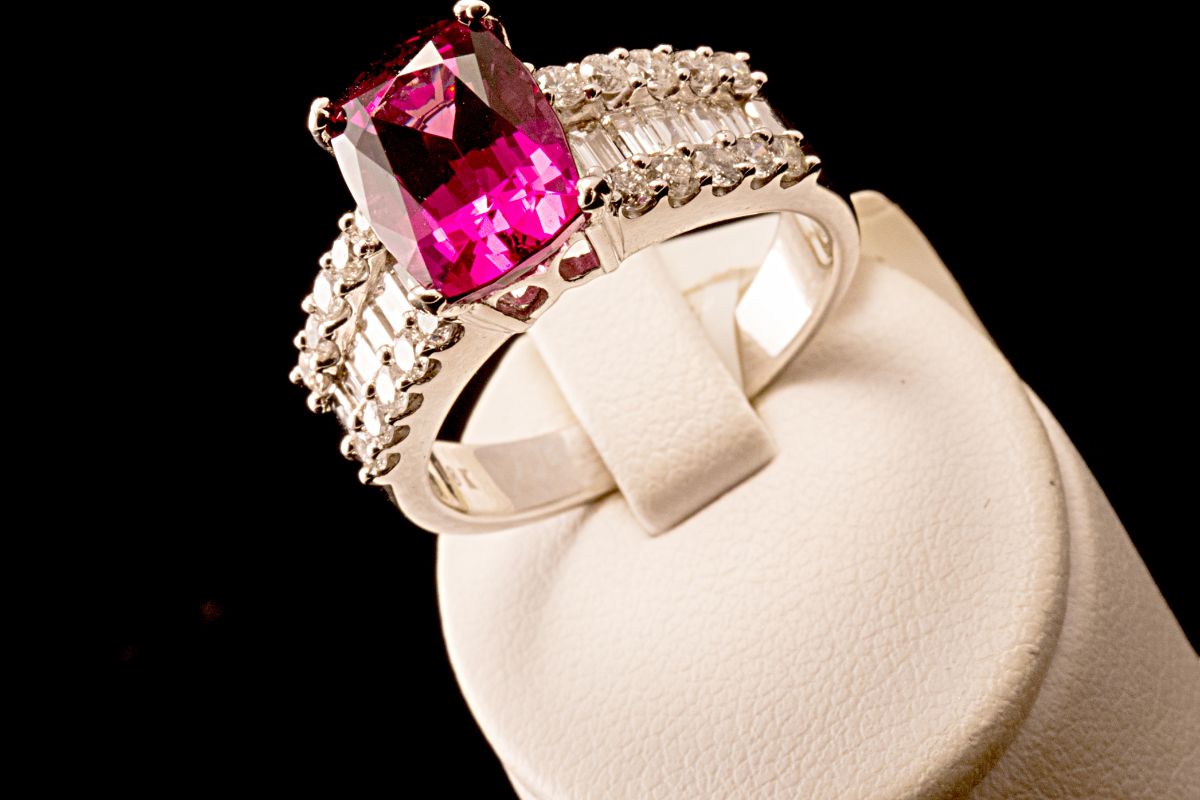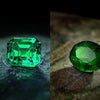
How to Tell if Garnet is Real: Expert Tips for Authenticity Verification
Determining the authenticity of garnet stones is essential if you're looking to invest in gemstone jewelry or add to a mineral collection. Garnets are valued for their varied colors, ranging from deep reds to vibrant greens, and have significant use in both ornamental and industrial applications. Knowing whether a garnet is genuine involves a combination of visual inspection, physical tests, and understanding its geological context.
Physical properties such as hardness, specific gravity, and refractive index are key indicators of a garnet's authenticity. With a Mohs scale hardness of 6.5 to 7.5, genuine garnets are resistant to scratches from substances with a lower rating, like copper or glass. By performing simple tests and observing the gemstone's characteristics, you can assess its likelihood of being real. A knowledgeable approach will equip you with the discernment necessary to differentiate between natural garnets and synthetic or imitation stones.
To confidently identify real garnets, familiarity with common traits and expert methods is advantageous. Laboratories can perform detailed analyses, but you can also use rudimentary techniques for initial assessments. Understanding the distinctions between garnet varieties and recognizing typical inclusions found in natural stones will aid in validating their authenticity.
Understanding Garnet Varieties
Garnets are a group of silicate minerals that have been used since the Bronze Age as gemstones and abrasives. When you're trying to determine if a garnet is real, it's essential to recognize that there are different types of garnets, each with unique properties and chemical compositions.
The major types of garnet include:
- Almandine: This is the most common type. It typically exhibits a deep red color, which can sometimes appear almost purple.
- Pyrope: Often a vibrant red, pyrope garnets can also have a slight brownish tone.
- Spessartine: Found in shades ranging from orange to reddish-brown, the spessartine garnet is also referred to as "spessartite."
- Andradite: This variety includes some of the rarest and most valuable garnets like demantoid and topazolite.
- Grossular: A widely varied garnet group, grossular may present green (tsavorite), cinnamon (hessonite garnet), or even light to dark yellows.
- Uvarovite: Always green in color, this garnet is rarer and typically found in small crystals.
Notable Varieties to Know:
- Tsavorite: A type of grossular garnet, known for its brilliant green color and a desirable gemstone.
- Demantoid: Highly prized, this andradite garnet variant is recognized by its green hue and horsetail inclusions.
- Hessonite garnet: This grossular type has a characteristic deep orange color that can resemble cinnamon.
To authenticate your garnets, closely observe color and texture for indicators tied to the specific variety and know that natural garnets are rarely 'perfect.' Inclusions are common, but a very clear stone may suggest synthetic creation or another type of stone entirely. Remember, each garnet type has its distinct appearance, so familiarize yourself with these features to better assess their authenticity.
Physical Properties of Garnets
| Property | Description |
|---|---|
| Composition | Group of silicate minerals containing various elements such as aluminum, calcium, and iron. |
| Hardness (Mohs) | 6.5 - 7.5 |
| Color | Varies widely, including red, orange, yellow, green, purple, brown, and black. |
| Refractive Index | 1.714 - 1.888 |
| Specific Gravity | 3.1 - 4.3 |
| Cleavage | Indistinct |
| Crystal System | Isometric |
| Transparency | Transparent to opaque |
| Origin | Found in various locations worldwide, including Africa, Asia, and North America. |
When verifying the authenticity of a garnet stone, understanding its physical properties is crucial. These properties include color characteristics, hardness, and the presence of inclusions, each serving as an indicator of a genuine garnet.
Color Characteristics
Color and Hue: Garnets come in a wide color range, including deep red, brown, orange, green, yellow, purple, and pink. Color zoning, which is the presence of different colors or shades within the same stone, can be a sign of natural formation. Be skeptical of garnets that appear too uniform in color, as this may indicate a synthetic or treated stone.
- Deep Red to Purple: Common in natural garnets
- Orange to Pink: Rarer hues
- Green: Most valuable and rare, typically associated with Tsavorite and Demantoid varieties
Measuring Hardness
Scratch Test: Garnet stones are known for their durability, ranking 6.5 to 7.5 on the Mohs scale of hardness. You can perform a simple scratch test using items of known hardness. If the garnet scratches a substance with a lower Mohs rating and is scratched by a material with a higher rating, this confirms the scratch resistance consistent with that of a real garnet.
- Mohs Scale Example:
- Talc (1)
- Gypsum (2)
- Garnet (6.5-7.5)
- Diamond (10)
Identifying Inclusions
Clarity and Imperfections: Natural garnets typically contain inclusions. These imperfections or impurities can often be seen with a magnifying glass. While flawless garnets are highly uncommon, too many inclusions affecting clarity can also suggest a stone of lower value or even a counterfeit.
- Types of Inclusions:
- Mineral Crystals: Sign of a natural garnet
- Bubbles: Often found in glass imitations
- Flaws: May affect light transmission and overall appearance
By closely examining these aspects, you will become more proficient in distinguishing between real and synthetic garnets, ensuring your stones are genuine.

Testing for Authenticity
When assessing the validity of a garnet, several precise tests can be performed. These examinations are designed to analyze various properties of the gemstone that indicate its authenticity.
Refractive Index Test
The refractive index (RI) of a garnet is a fundamental property you can check using a refractometer. Place the flat surface of the garnet onto the refractometer, and the device will measure the degree of refraction. Authentic garnets have refractive indexes that typically fall within a specific range, usually between 1.72 and 1.94.
Absorption Spectrum Analysis
Labs utilize absorption spectrum analysis to identify the unique pattern that light creates as it is absorbed by the gemstone. Each garnet will produce a characteristic absorption spectrum. This signature can help confirm the stone's identity and detect any inconsistencies with known garnet spectra.
Examination Under Magnification
Using a magnifying glass or a microscope, closely examine the garnet for imperfections. While synthetic gems can also have flaws, the nature and distribution of flaws within a real garnet can help determine its authenticity. Look for unique inclusions or irregularities that are commonly found in natural stones.
Physical Tests
Lastly, physical tests can provide clues about a garnet's authenticity. While less precise than other methods, these tests are often more accessible. The scratch test involves using a steel nail to gently attempt to scratch the stone; authentic garnet has a high hardness and should not scratch easily. Furthermore, testing the stone against sandpaper can help ascertain its durability. Be advised, these tests may damage the stone and should be conducted with caution.
Distinguishing Real vs Synthetic Garnets
| Aspect | Real Garnets | Synthetic Garnets |
|---|---|---|
| Origin | Naturally formed deep within the Earth's mantle over millions of years. | Created in a laboratory using advanced technological processes. |
| Composition | Group of silicate minerals containing various elements such as aluminum, calcium, and iron. | May have the same chemical composition as natural garnets, but the growth process is controlled. |
| Color | Varies widely, including red, orange, yellow, green, purple, brown, and black. | Can be produced in a controlled environment, allowing for a range of colors. |
| Hardness (Mohs) | 6.5 - 7.5 | Generally similar to natural garnets in hardness. |
| Transparency | Transparent to opaque, depending on the specific garnet type. | Transparent to opaque, similar to natural garnets. |
| Market Availability | Less abundant and may be more expensive due to natural rarity. | More readily available and may be more affordable than natural counterparts. |
Discerning between real and synthetic garnets requires a careful approach. Equip yourself with the right knowledge and tools to confidently identify genuine garnet gemstones.
Visual Inspection Tips
To begin, use a magnifying glass to inspect your garnet closely. Look for natural inclusions or irregularities typically absent in synthetic counterparts. Synthetic garnets may exhibit flawless clarity or unnatural perfection that real garnets rarely show. In contrast, natural garnets often contain small flaws or inclusions. Examine the color as well; genuine garnets can display a range of hues, while synthetic garnets may have overly saturated and consistent coloration that doesn't vary.
Conducting Home Tests
You can perform simple tests at home to evaluate your garnet's authenticity. A scratch test involves dragging your stone across an unglazed ceramic tile. However, this test can damage your garnet, so it's not recommended for high-value stones. Real garnets will typically scratch the tile without sustaining damage, due to their hardness. Another tool at your disposal is a refractometer, which measures the refraction of light in the stone, giving clues to whether your garnet is real or a glass imitation.
Understanding Garnet Imitations
Awareness of common imitations helps in identifying genuine garnets. Composite garnets are multi-layered stones with a garnet top and base but different middle layer. Other simulants include red spinel, red tourmaline, and ruby, which can resemble garnet in color but have distinct physical and chemical properties. Yttrium aluminum garnet (YAG) and glass can also mimic garnet's appearance but typically lack the hardness and refractive index of genuine garnet. Remember, a careful visual inspection and home-based tests are essential first steps before seeking professional verification.
Analyzing Garnet Jewelry
When evaluating garnet jewelry, it's important to consider the quality of the gemstone's cut, understand the factors affecting pricing, and be aware of key considerations that influence the authenticity and value of the piece.
Evaluating Gemstone Cut
- Shape and Faceting: A well-cut garnet will have symmetrical faceting that maximizes the gemstone's natural color and brilliance. Your engagement ring or other garnet jewelry should exhibit even patterns that reflect light uniformly.
- Finish: A genuine garnet stone should have a polish free of scratches or dull areas, ensuring a bright and reflective surface.
Garnet Jewelry Pricing
- Price Tags: Garnet jewelry prices vary widely. Red garnet, often found in engagement rings, might be more affordable compared to rarer garnet varieties. Prices give a first indication of whether a garnet is genuine; unusually low costs could suggest inauthentic stones.
- Value Factors: The value of garnet is influenced by its color, clarity, carat weight, and cut. Quality and authenticity generally increase the price, so expect higher costs for premium attributes from reputable sellers.
Considerations When Buying
- Seller Reputation: Always purchase garnet jewelry from a trusted seller. Reputation is paramount; experienced jewelers are less likely to sell imitation stones.
- Certificates of Authenticity: For high-value items, insist on a certificate that verifies the garnet as a genuine birthstone. It should detail critical characteristics and origins, offering you reassurance of its authenticity.
Historical and Cultural Significance

Garnet, a gemstone that resides at the crossroads of history and mythology, garners significance from its name and uses. The name garnet is derived from the Latin word 'granatum,' which means pomegranate. This connection stems from the stone's striking resemblance to the fruit's red seeds.
As a birthstone, garnet represents January and is traditionally given in celebration of the second year of marriage. The stone's use as a protective talisman dates back to ancient civilizations, where warriors adorned themselves with garnets for safety in battle due to the belief in its shielding powers.
Throughout history, garnets have held a place of honor in many cultures. They were prized for their durability and radiant beauty. Beyond aesthetics, garnets were believed to hold curative powers and were used in ancient medicinal practices to promote health and vitality.
Regarding its origin, garnet deposits are found globally, each geographic location contributing to the gem's variety and uniqueness. The diversity within the garnet family means that this gemstone comes in a spectrum of colors and compositions, though the deep red stones are the most widely recognized.
- Cultural Associations:
- Protection for travelers and warriors
- Symbols of friendship and trust
- Thought to bring light and hope to the darkest of times
Your appreciation for garnet's rich history enhances your understanding of its worth, beyond the allure of its physical beauty.
Frequently Asked Questions
When determining if a garnet is real, consider its physical properties and apply simple tests that don't require specialized equipment.
What are the visual characteristics to identify a natural garnet?
A natural garnet typically has a glassy luster and may display sharp facet edges and rich color that ranges from deep red to purple or orange. Inclusions are common but should not detract from the overall transparency or brilliance.
What methods can be used to test the authenticity of a garnet at home?
At home, you can perform a scratch test; garnets are hard enough to scratch glass. Check for bubbles inside the gemstone too; synthetic stones often have them, while natural garnets do not.
How can a flashlight be used to verify if a stone is a genuine garnet?
Shine a flashlight through the garnet to observe its translucency and color. A genuine garnet should allow light to pass through and exhibit a deep, even color without any distinct layers or unnatural color changes.
What are the common traits of garnet beads to determine their reality?
Genuine garnet beads are relatively hard and will resist scratches; they should also be consistent in color with imperfections, as flawless beads are rare and may indicate synthetic manufacturing.
In terms of pricing, how does the cost of genuine garnet jewelry compare to other gemstones?
Genuine garnet jewelry is generally affordable compared to other precious stones like diamonds and sapphires. However, rare garnet varieties, such as demantoid and tsavorite, can fetch higher prices.
What tests can jewelers perform to confirm the authenticity of a garnet?
Jewelers can use refractometers to measure the gemstone's refractive index, or spectroscopes to analyze the stone's absorption spectrum, both of which help indicate whether the garnet is authentic and identify its variety.
Checkout some of our top collections:










